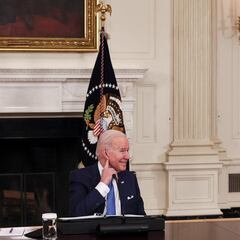What percentage of my income should I put into my 401k?
The retirement savings plan is offered by many employers, conferring tax benefits to those who invest.


The IRS announced the changes to 401(k) payments back at the start of November. The employee contribution limit for the plans has increased to $20,500 this year, up from $19,500 in 2021, and catch-up deposits for savers 50 and older will still be $6,500.
This change will also apply to people who use the 403(b), most 457 plans, as well asthe federal government's Thrift Savings Plan.
There are a number of options when it comes to new jobs and your 401k. Let's talk about it.
— CNET (@CNET) February 9, 2022
Follow us on Youtube https://t.co/BhuSuomzHj
& on Instagram! https://t.co/5FSPpxCSxQ pic.twitter.com/JwZUmML4F5
The limit on annual contributions to an Individual Retirement Arrangements (IRA) remains unchanged at $6,000. The IRA catch-up contribution limit for individuals aged 50 and over is not subject to an annual cost-of-living adjustment and remains $1,000. However, those over 50 do have an advantage and catch-up deposits will still be $6,500, meaning they can contribute a maximum of $27,000 over a single year.
Although many have savings shortfalls, only 8.5% of workers maxed out company retirement plans in 2018, according to a report from the Congressional Research Service.
Related news:
- Is covid-19 considered a natural disaster for taxes?
- Are property taxes deductible?
- Does social security count as income?
- What does it mean when the IRS accepts your taxes?
What is the optimal amount to invest?
We're not financial advisors, so we'll let others do the advising for us.
"The ideal contribution rate for retirement depends on a few different factors," says Mark Hebner of Index Fund Advisors in Irvine, California, "but a good sweet spot is 10 to 15 percent - more towards 15 percent if you can afford to do so. The bare minimum is 10 percent."
Others suggest you should try and contribute a bit more.
"If you can, you should move closer to a 20 percent contribution to your retirement plan and keep that amount as your salary increases," says Nickolas R. Strain, a financial advisor with Halbert Hargrove in Long Beach, California. He added the ideal percentage is between 15 and 20 percent.
Your biggest 401(k) questions, answered: https://t.co/bIEQaz3Lea. #401k #retirement #money #savings pic.twitter.com/adoXeXhX1j
— Empower (@EmpowerToday) February 5, 2022
Related stories
The consensus is that any saving is good, but for it to be worth your while when you retire, a good target would be contributions of 15 percent. 10 percent
Clearly, economic struggles, of low wage growth and rapid inflation, make it more and more difficult for people to save money. With moves by the Biden administration to tackle these woes currently held up in Congress, it could be some time before people have the money to ensure they have a comfortable retirement.

